Sunlike - LED light of a new generation
Modern white LEDs used for illumination work according to the same principle - the LED shines with blue light, and the phosphor with which it is coated converts the light to white, adding to it the red and yellow components. The lack of such a design in the uneven spectrum, the blue peak (because of it, some scientists have even put forward the theory of the insecurity of LED lighting), and the "failure" in blue and green.
Seoul Semiconductor has developed Sunlike technology, which uses LEDs with a violet light, coated with a three-component phosphor that converts violet light to full-spectrum with a full red, green and blue component.
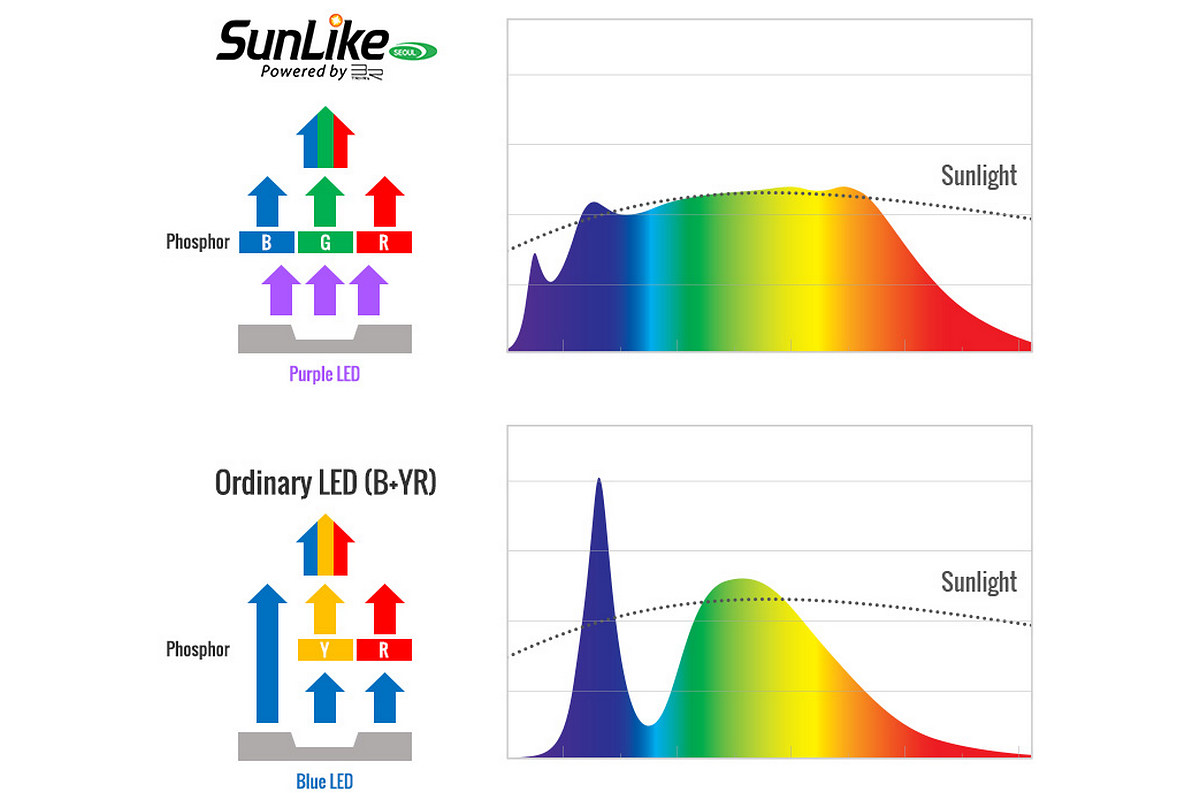
')
The technology is not without reason called Sunlike (in translation - “like the sun”). The spectrum of light of such LEDs is really similar to the spectrum of sunlight, and the color rendering index is about 97. In fact, the quality of light of such LEDs is not inferior to the quality of light of incandescent lamps.
The site Seoul Semiconductor states that low-power Sunlike 0.2W modules with color temperatures of 2700K, 3000K, 4000K, 5000K and 6500K are already supplied, and high-power modules with a color temperature of 3000K are still in development.

In fact, the same modules, but with a color temperature of 4000K and 5000K, are already delivered in small quantities to individual customers, but they are still very expensive - 6 euros for 6 watts, 13 euros for 10 watts, 19 euros for 15 watts and 23 euro for a 25-watt.
An enthusiast from Belarus, who calls himself GrowByLEDs, managed to get 25-watt modules and make experimental lamps on them, which I tested.

A round COB module with a diameter of 15 mm is placed on a square aluminum substrate 19x19 mm.
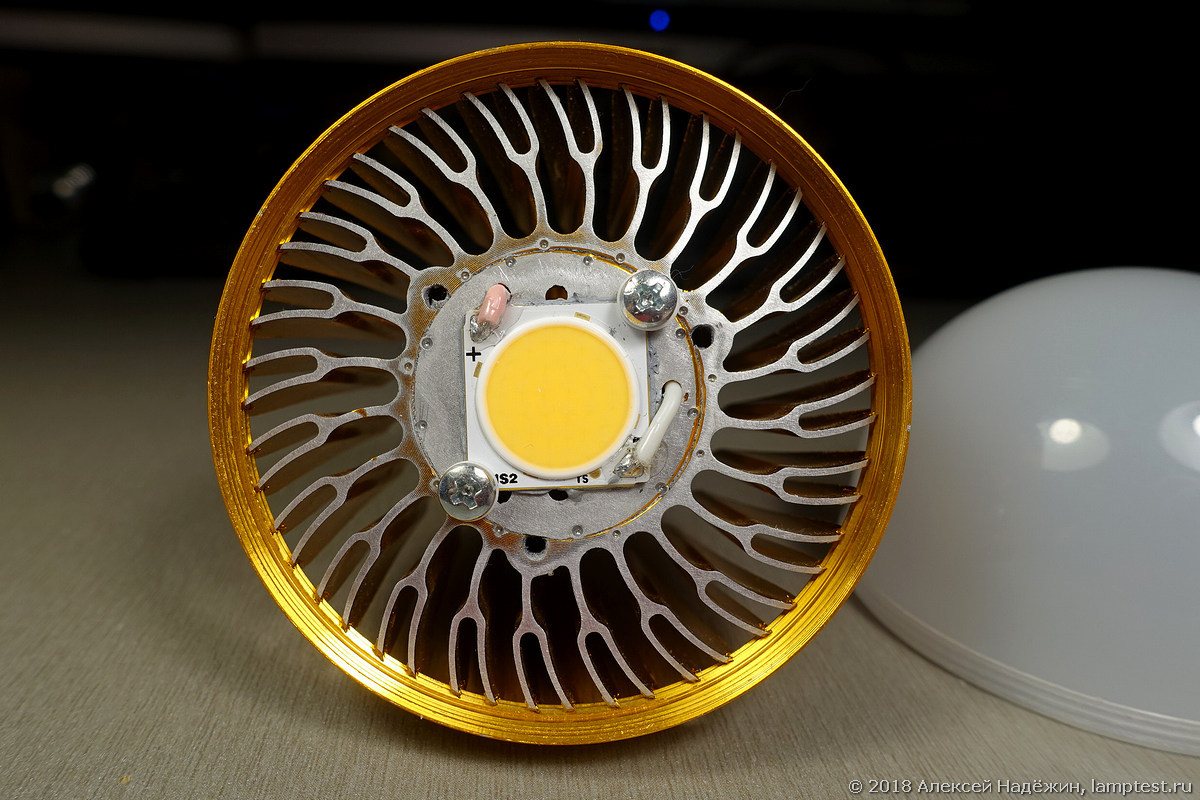
To obtain more accurate results of the color rendering index, color temperature and spectrum, I measured the light of the lamps with the caps removed. Spectrometer Uprtek MK350D showed the following results.

The spectrum is really smoother than that of ordinary LED lamps. The color rendering index is about 97.
I compared the spectra of the Sunlike 4000K, an ordinary 4000K LED lamp, a fluorescent lamp, a halogen lamp and the sun.
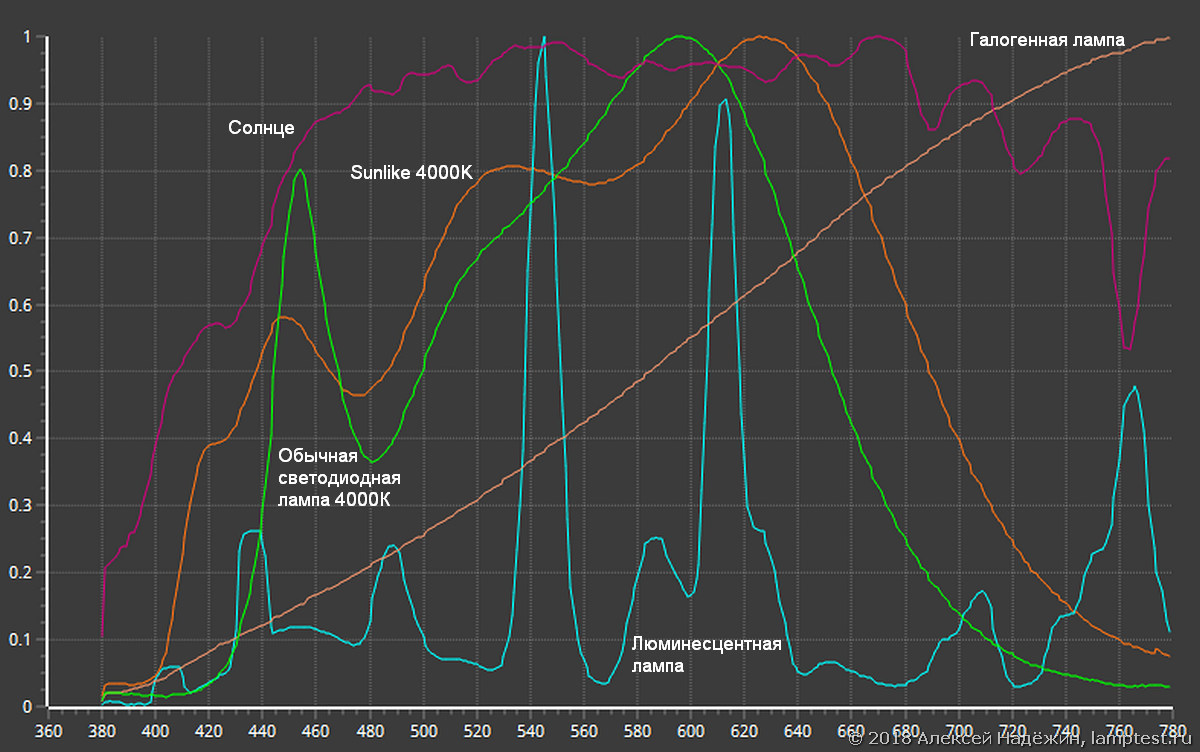
In the experimental lamps that I tested, the Sunlike 25W modules are used at reduced power — the finished lamps consume 11.7W. In this case, a lamp with a 4000K module gives 960 lm, a lamp with a 5000K module - 1000 lm. With the caps removed, the lamps give 1133 lm and 1180 lm, respectively.
It turns out that the efficiency of Sunlike modules in this mode is 97-101 lm / W, which is not inferior to conventional modern LEDs and it is very cool.
Belarusian lamps on Sunlike modules can be purchased now (from $ 20 for 6-watt to $ 50 for 18-watt). I do not publish links here, but they will be in a copy of this article on lamptest.
Seoul Semiconductor is not the only company that has launched a new generation of LEDs. Chinese Yuji LED also began to produce modules with violet LEDs and RGB-phosphor, giving light with CRI 97, but judging by the information on their website, the purple peak in the spectrum is much larger and the efficiency of the modules is less - 65-85 lm / W.
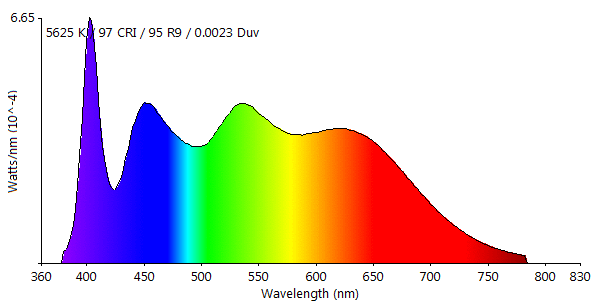
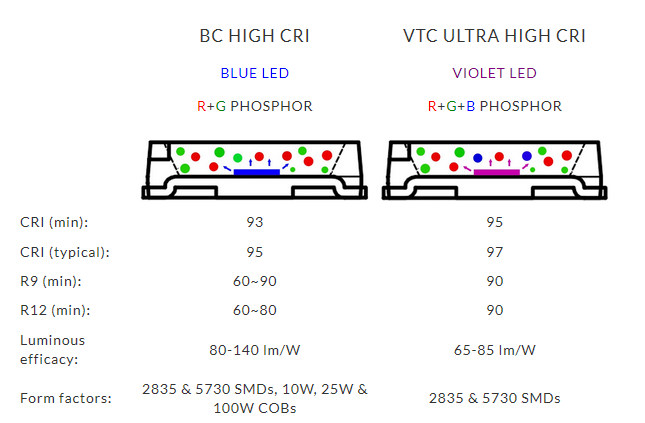
LED lighting is already used everywhere and can not but rejoice that there are new technologies that make this light better.
New technology is just emerging, and lamps with Sunlike modules are still expensive, but it is very likely that in 2-3 years a substantial part of lighting LEDs will be manufactured using new technology and lamps with Sunlike modules or similar will cost as much as ordinary LED bulbs now.
© 2018, Alexey Nadyozhin
Seoul Semiconductor has developed Sunlike technology, which uses LEDs with a violet light, coated with a three-component phosphor that converts violet light to full-spectrum with a full red, green and blue component.

')
The technology is not without reason called Sunlike (in translation - “like the sun”). The spectrum of light of such LEDs is really similar to the spectrum of sunlight, and the color rendering index is about 97. In fact, the quality of light of such LEDs is not inferior to the quality of light of incandescent lamps.
The site Seoul Semiconductor states that low-power Sunlike 0.2W modules with color temperatures of 2700K, 3000K, 4000K, 5000K and 6500K are already supplied, and high-power modules with a color temperature of 3000K are still in development.

In fact, the same modules, but with a color temperature of 4000K and 5000K, are already delivered in small quantities to individual customers, but they are still very expensive - 6 euros for 6 watts, 13 euros for 10 watts, 19 euros for 15 watts and 23 euro for a 25-watt.
An enthusiast from Belarus, who calls himself GrowByLEDs, managed to get 25-watt modules and make experimental lamps on them, which I tested.

A round COB module with a diameter of 15 mm is placed on a square aluminum substrate 19x19 mm.

To obtain more accurate results of the color rendering index, color temperature and spectrum, I measured the light of the lamps with the caps removed. Spectrometer Uprtek MK350D showed the following results.

The spectrum is really smoother than that of ordinary LED lamps. The color rendering index is about 97.
I compared the spectra of the Sunlike 4000K, an ordinary 4000K LED lamp, a fluorescent lamp, a halogen lamp and the sun.

In the experimental lamps that I tested, the Sunlike 25W modules are used at reduced power — the finished lamps consume 11.7W. In this case, a lamp with a 4000K module gives 960 lm, a lamp with a 5000K module - 1000 lm. With the caps removed, the lamps give 1133 lm and 1180 lm, respectively.
It turns out that the efficiency of Sunlike modules in this mode is 97-101 lm / W, which is not inferior to conventional modern LEDs and it is very cool.
Belarusian lamps on Sunlike modules can be purchased now (from $ 20 for 6-watt to $ 50 for 18-watt). I do not publish links here, but they will be in a copy of this article on lamptest.
Seoul Semiconductor is not the only company that has launched a new generation of LEDs. Chinese Yuji LED also began to produce modules with violet LEDs and RGB-phosphor, giving light with CRI 97, but judging by the information on their website, the purple peak in the spectrum is much larger and the efficiency of the modules is less - 65-85 lm / W.


LED lighting is already used everywhere and can not but rejoice that there are new technologies that make this light better.
New technology is just emerging, and lamps with Sunlike modules are still expensive, but it is very likely that in 2-3 years a substantial part of lighting LEDs will be manufactured using new technology and lamps with Sunlike modules or similar will cost as much as ordinary LED bulbs now.
© 2018, Alexey Nadyozhin
Source: https://habr.com/ru/post/411021/
All Articles